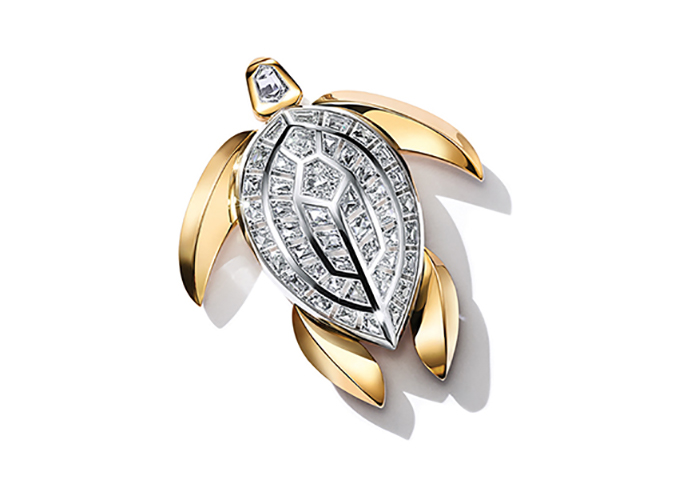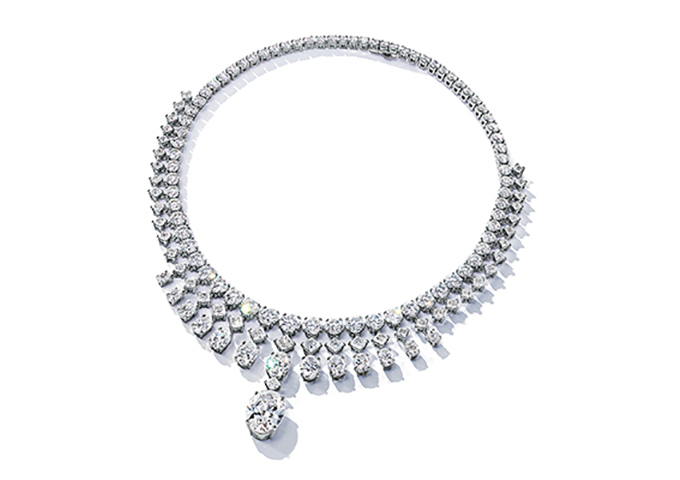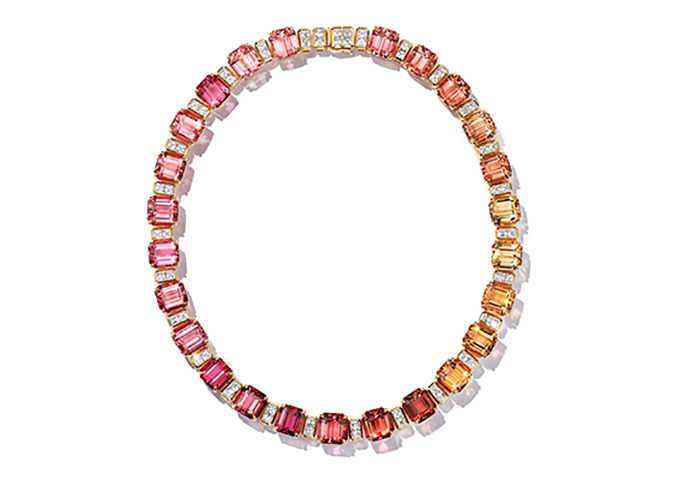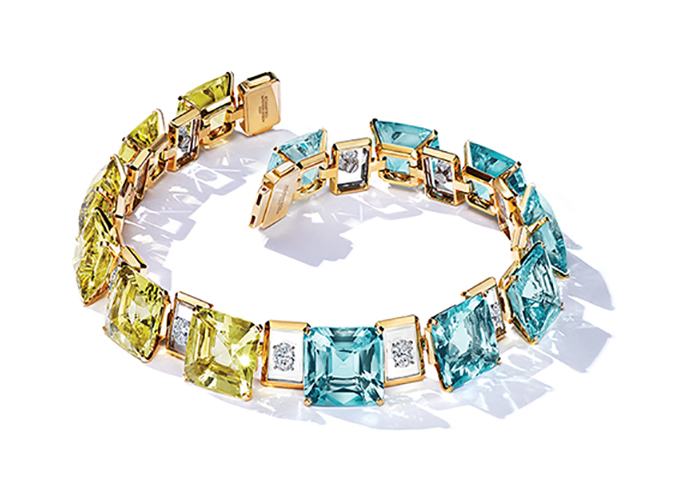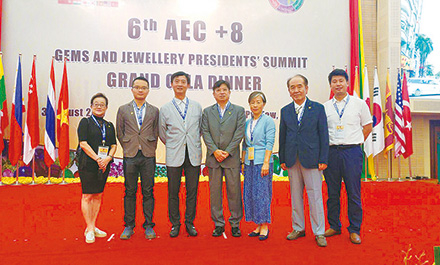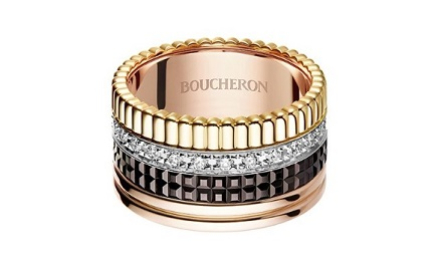A female industry veteran plays two significant roles at Tiffany & Co as the jeweller commits to uphold time-tested traditions while envisioning a future that fosters sustainability, innovation and design transformation.
Tiffany & Co’s Victoria Reynolds talks about the privileges and challenges of being the company’s vice president of Global Merchandising – High Jewelry and first female chief gemmologist. Backed by more than three decades of experience at Tiffany where she honed her expertise in design, diamond grading and high jewellery, Reynolds was named vice president of Global Merchandising – High Jewelry in 2017. Her responsibilities include product development of Tiffany’s high jewellery category and overseeing its global growth and development strategy. She made history in 2020 when she became the brand's first female chief gemmologist, representing a core team of women leaders in the company. In a talk with JNA, Reynolds shares her business philosophy, which focuses on striking a delicate balance between brand heritage, sustainability and modernisation.
JNA: How are your two roles related and what responsibilities do they entail?
Victoria Reynolds: The chief gemmologist has an ongoing quest to find the perfect diamonds and gemstones. I search around the world for stones that meet our exacting standards. It can take several years to find what we are looking for. It is somehow like a Broadway audition because each gem must have a special quality for me to purchase it.
Some of the most amazing gems we have acquired were surprises. We may not have been looking specifically for that stone, but somehow it finds us. When that happens, I know that I am looking at something extraordinary.
My dual roles complement each other and are symbiotic. I have a full 360-degree responsibility for all Tiffany High Jewelry, so it is a unique position. It is a bit like a well-orchestrated musical piece – from ideating with the design team and collaborating with our gemstone and diamond acquisition teams, to working with our jewellers and craftspeople who bring these designs to life.
JNA: How did Tiffany & Co’s historic use of coloured gemstones impact today’s jewellery trade?
Reynolds: Fuelled by Charles Lewis Tiffany’s passion for acquiring rare and unusual gemstones, which began in the 1840s and continues to this day, our pioneering spirit of discovery has been at the heart of Tiffany’s DNA.
What makes this history so unique is that we have been willing to take risks for well over a century and are leaders in incorporating new gems into our jewellery vernacular, alongside the more traditional rubies, emeralds and sapphires. It has always been about innovation and how we can expand our gem library and colour palette.
As leaders in luxury jewellery, you now see tanzanite, kunzite, morganite and tsavorite featured not only in Tiffany high jewellery collections, but those of other major houses as well.
JNA: What do you consider as a major gemstone milestone in your career so far?
Reynolds: It was procuring and bringing to life an incredible over 30-carat diamond. The connection with the client who purchased it was immediate and electric – they put it on and never took it off. It will always be a special moment to me. A diamond that rare found the right person, who now radiates its inner beauty. This makes me happy.
JNA: How important is Tiffany’s fancy colour diamond legacy?
Reynolds: It began with the legendary Tiffany yellow diamond. Then Tiffany’s chief gemmologist, Dr. George Frederick Kunz, supervised the transformation of the original 287.42-carat rough stone into a cushion-shaped brilliant weighing 128.54 carats with an unprecedented 82 facets – 24 more facets than the traditional 58-facet brilliant cut. Prioritising beauty over carat weight, the Tiffany diamond is the purest example of visionary design and unparalleled craftsmanship.
Unveiled in 1878 and later mounted in Jean Schlumberger’s Ribbon Rosette diamond necklace and worn by Audrey Hepburn to promote Breakfast at Tiffany’s in 1961, the famous yellow diamond is the cornerstone of Tiffany’s longstanding diamond authority. Our love affair with yellow diamonds continues and is anchored in iconic designs from the Extraordinary Tiffany High Jewelry Collection 2020, which features yellow diamonds and ‘Rare Fancy Color Diamonds’ or RFCDs that possess all characteristics that make white diamonds beautiful: Fire, brilliance, sparkle and incredible surface luster, with the extraordinary bonus of vibrant colour.
JNA: Is there a gemstone classification that you coined as chief gemmologist?
Reynolds: There are several pieces in the Extraordinary Tiffany Collection that highlight ‘autumnal diamonds.’ This term is unique to Tiffany and pays homage to the colours of Fall. The warm bright colours of fall leaves are mirrored by matching pairs of fancy vivid yellow, fancy vivid orangey yellow, and fancy deep brownish yellowish orange diamonds.
JNA: Could you update us on your provenance programme and fresh traceability initiatives moving forward?
Reynolds: In 2019, we became the first global luxury jeweller to share the origin of our newly sourced, individually registered diamonds. In October 2020, we were the first to share our diamonds’ full craftsmanship journey, including the cutting, polishing and setting location. We are proud to cut and polish most of our diamonds in our workshops, helping us maintain a safe, healthy and welcoming environment and contribute to local economies.
The journey of a Tiffany diamond is more than a map of where a diamond has been; it represents our operations’ positive impact on local communities, human rights and the environment. To further our sustainability commitment, we launched an ambitious set of 2025 Sustainability Goals in September last year: A roadmap outlining our sustainability priorities for the coming years. By the end of 2021, we have committed to achieve 100 per cent traceability of all gold, silver and platinum that we use for our jewellery to mine or recycle.
JNA: Tiffany is a brand with a rich heritage, which also emphasises innovation. How do you reconcile these two aspects when selecting gemstones and making jewellery?
Reynolds: Innovation has been at the forefront of Tiffany high jewellery designs for over 180 years. We are constantly ideating to keep our jewellery modern and relevant with designs that are wearable from day to evening while honouring our rich history. With our superior craftsmanship, we seek out new gem-cutting techniques and innovate ways to set stones to create the most endearing high jewellery.
In Spring this year, we worked on several important pieces for the Colors of Nature High Jewelry Collection, including two exceptional transformable brooches that can be worn as pendants – something I love to do with my own jewellery. It allows the owner to style the pieces, making them unique to the wearer. One butterfly-inspired brooch uses a technique that makes the metal disappear around the gems, so that they are seemingly floating. Secondly, all stones are slightly transparent, so depending on where the wings are, they almost have a mesmerising stained-glass effect.
The bird brooch, whose body is hand-carved in white agate, has wings made from custom-cut diamonds that transform into feathers that tuck under its body. I love this piece because the agate is such a warm, soft stone, and the juxtaposition of the irregularity and brilliance of the diamonds next to it brings out the beauty of both.






